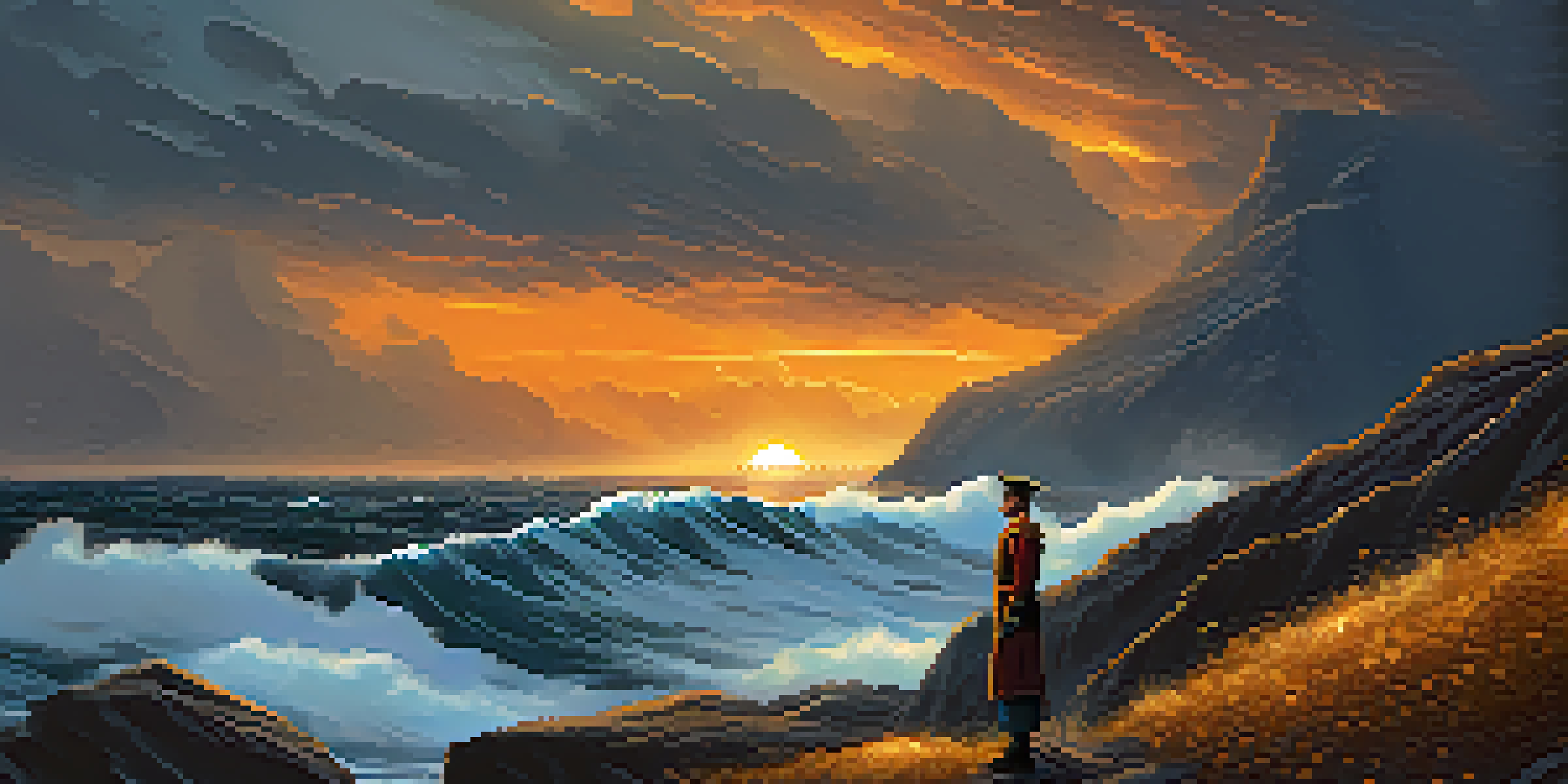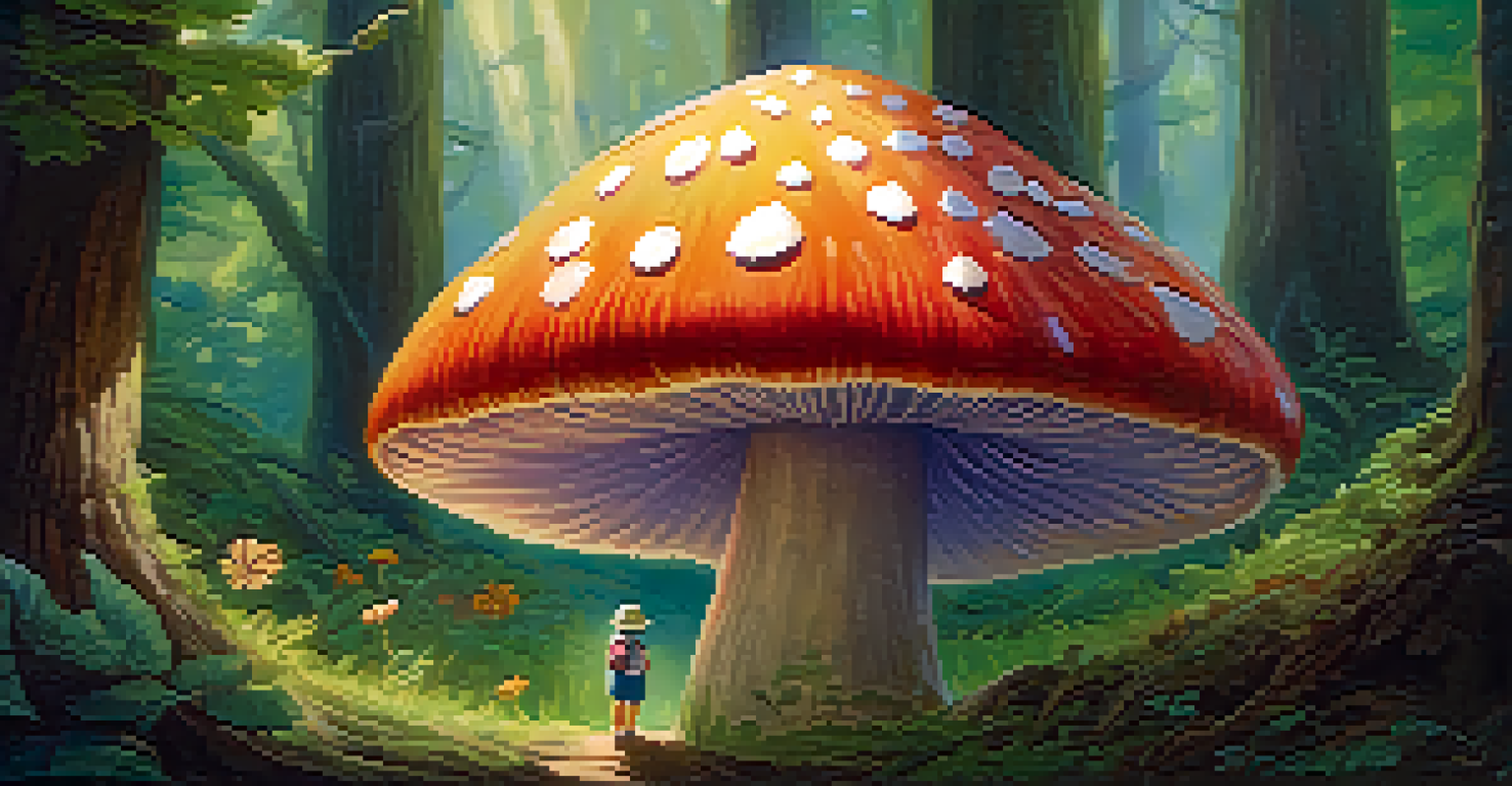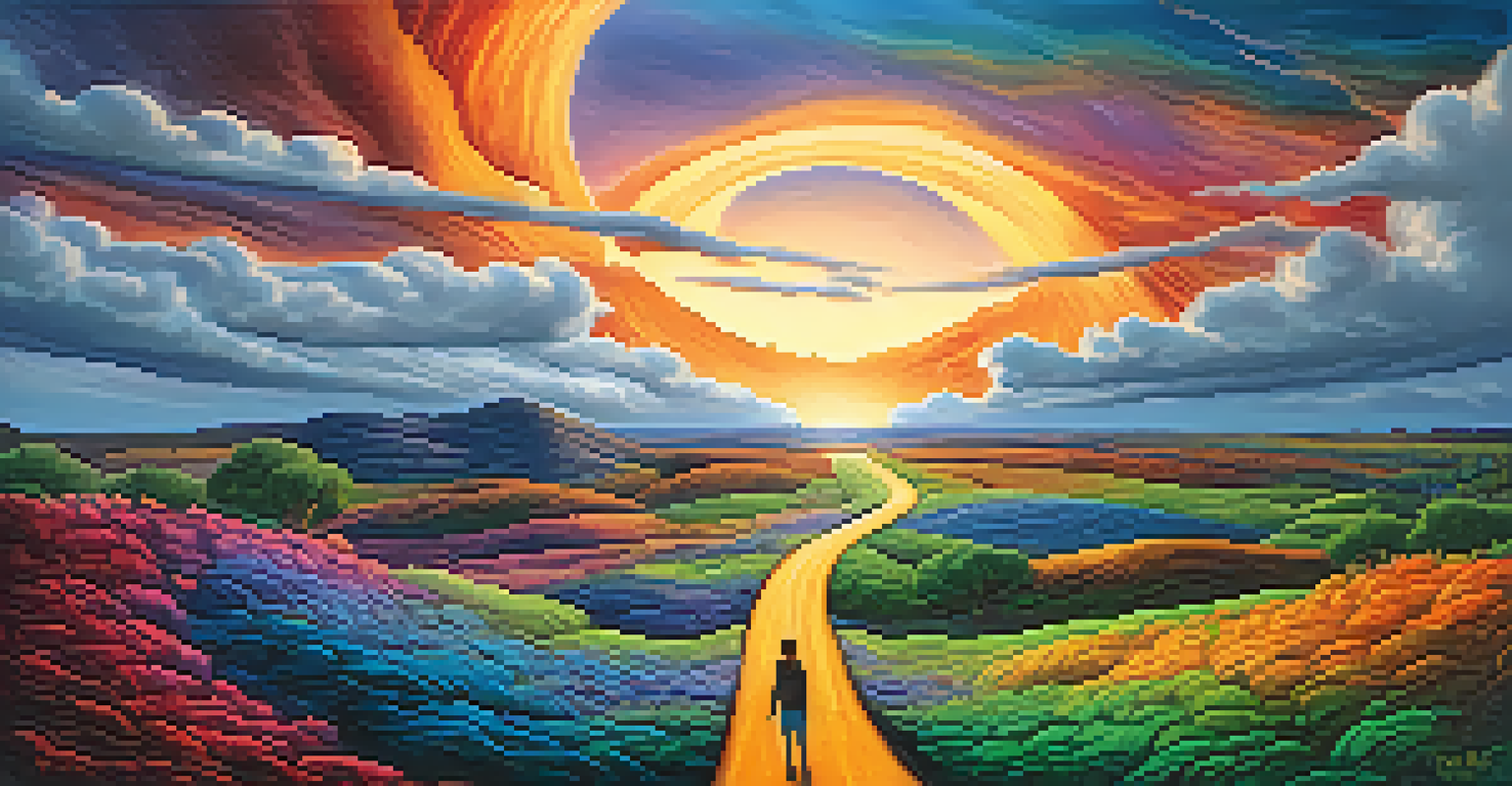Using Digital Art for Storytelling: Tips and Techniques

Understanding the Power of Digital Art in Storytelling
Digital art has transformed the way we tell stories, making them more vibrant and engaging. It brings characters and scenes to life in a way that traditional methods sometimes can't. The ability to manipulate colors, shapes, and textures allows artists to evoke emotions and convey messages effectively.
Art is not what you see, but what you make others see.
Consider how a single image can express complex narratives. A character's expression, the background setting, and even the color palette all contribute to the story being told. This creates an immersive experience for the audience, drawing them into the world you've created.
By leveraging digital tools, artists can experiment and iterate quickly, refining their storytelling techniques. Whether it's a simple illustration or a complex animation, digital art opens up endless possibilities for creative expression.
Choosing the Right Tools for Your Digital Art Journey
Selecting the right digital tools is crucial for effective storytelling. Programs like Adobe Photoshop, Procreate, and Clip Studio Paint offer unique features that cater to different styles and needs. It's essential to explore these options and find what works best for you.

For instance, Procreate is beloved for its intuitive interface, making it perfect for beginners. Adobe Illustrator, on the other hand, is excellent for vector illustrations, allowing for crisp, scalable artwork. Your choice of tool can significantly affect how you convey your story visually.
Digital Art Enhances Storytelling
Digital art transforms narratives by bringing characters and scenes to life through vibrant visuals and emotional depth.
Don't forget about hardware, too. A good tablet or stylus can drastically enhance your drawing experience. Investing in quality tools can help you create more polished and professional-looking art that resonates with your audience.
Crafting Compelling Characters Through Art
Characters are often the heart of any story, and digital art is a fantastic way to bring them to life. Start by defining your character's personality traits and backstory, as these elements will guide your visual design. For example, a brave hero might have a strong, confident stance, while a timid character may appear smaller and more reserved.
Every artist was first an amateur.
Consider using color psychology to enhance character traits. Warmer colors can evoke feelings of friendliness or aggression, while cooler tones can imply calmness or detachment. This subtle use of color can deepen the audience's connection to your characters and make them more relatable.
Additionally, think about how your characters interact with their environment. Their surroundings can reflect their emotions or challenges, adding another layer to your storytelling. By carefully crafting both characters and settings, you create a more immersive narrative experience.
Building a Strong Narrative Arc with Visuals
Every great story has a narrative arc, and digital art can enhance this structure visually. Start by outlining the key moments in your story: the introduction, rising action, climax, falling action, and resolution. Each of these moments can be represented through art, creating a visual roadmap for your audience.
Think of how you can use composition to guide the viewer’s eye through your story. For example, placing your main character in the foreground during a pivotal moment can draw attention and heighten drama. Similarly, varying the scale of objects can create a sense of depth and progression.
Choosing the Right Tools Matters
Selecting the appropriate digital tools and hardware is essential for effectively conveying your artistic vision.
Incorporating visual metaphors can also enrich your narrative. A stormy background might symbolize internal conflict, while bright colors could indicate hope. These visual elements work together to reinforce your story's themes and emotions.
Using Color and Contrast to Evoke Emotions
Color is a powerful tool in storytelling, capable of evoking a wide range of emotions. By understanding color theory, you can create palettes that resonate with the feelings you want to convey. For example, red often symbolizes passion or danger, while blue can represent calmness or sadness.
Contrast is equally important, as it helps to highlight key elements in your artwork. Using a bright color against a dark background can draw attention to a character or an important object. This not only makes your art visually appealing but also enhances the storytelling aspect.
Experimenting with gradients and shading can add depth to your illustrations, creating a more dynamic visual experience. As you play with color and contrast, think about how these choices affect the mood and atmosphere of your story.
Incorporating Text and Typography into Your Art
Text can be a powerful complement to your digital art, adding context and enhancing the narrative. Whether through dialogue, captions, or titles, incorporating text allows you to convey messages that visuals alone might not fully express. It can guide the viewer’s understanding and emotional response.
Typography plays a crucial role in how your text is perceived. The choice of font, size, and color can evoke different feelings and add personality to your work. For instance, a bold, modern font may convey strength, while a whimsical, handwritten style could suggest playfulness.
Engage Your Audience Online
Sharing your digital art on platforms and engaging with your audience fosters community and enhances your artistic journey.
When integrating text with your visuals, consider the overall composition. Ensure that the text complements rather than overwhelms your artwork. Striking a balance can elevate your storytelling and create a cohesive piece that resonates with viewers.
Sharing Your Digital Art Story with the World
Once your digital art story is complete, it's time to share it with the world. Platforms like Instagram, Behance, and ArtStation are great for showcasing your work and connecting with other artists and audiences. Each platform has its unique audience, so tailor your approach accordingly.
Engaging with your audience is key. Respond to comments, ask for feedback, and participate in online challenges or collaborations. Building a community around your work not only helps you grow as an artist but also fosters connections that can inspire future projects.

Don't forget to promote your art through storytelling. Share behind-the-scenes processes, your artistic journey, or the inspiration behind your pieces. This adds depth to your work and invites viewers to connect with you on a more personal level.